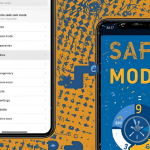If you have spotted odd activity on WhatsApp, pause and get organised. Resist the urge to reply to unknown messages or share any codes. Note what looks off, such as verification prompts you did not request, new groups you do not recognise, or an unfamiliar device in linked devices. Ask a trusted contact if they received strange messages from your number. Keep your SIM active and avoid reinstalling the app until you have completed basic checks.
If you are wondering “what to do if my WhatsApp is hacked”, start from here and follow each section to regain control with confidence today. The following guide primarily focuses on what to do in a WhatsApp hacked situation, the methods for regaining access, and strategies for reducing the likelihood of future occurrences.
How to Know if Your WhatsApp Account Has Been Hacked
Here you will explore how to know if your WhatsApp account has been hacked:
Common Signs of a Hacked WhatsApp Account
If you are confused about whether someone hacked my WhatsApp, then check out these signals:
- Messages sent from your number that you did not compose, especially payment requests or links.
- Friends are reporting fake OTP messages supposedly from you.
- New groups are appearing, or you’re being added to unknown groups without your consent.
- Frequent prompts to verify your number, even though you did not ask for one.
- Review your read receipts or online status patterns that don’t match your usage.
- Changes to your profile photo or about line that you did not make.
- A new device is shown in Linked Devices that you do not recognise.
How to Check Active Sessions on WhatsApp Web
Sometimes the issue is a stray web session left open at school, office, or a cybercafé. If you’re dealing with a WhatsApp account hacked issue, go to Settings → Linked Devices to review and sign out of anything unfamiliar.
- Android
- Open WhatsApp, tap the three dots, then settings.
- Tap linked devices.
- Review the list and tap log out on unfamiliar sessions.
- iPhone
- Open WhatsApp, go to settings.
- Tap linked devices.
- Log out of anything you do not recognise.
Common Ways Hackers Take Over WhatsApp Accounts
If your WhatsApp got hacked and you are worried about it happening in future. Then, here are the common ways hackers take over WhatsApp accounts:
1. The 6-Digit OTP Scam
You receive a six-digit WhatsApp code. Soon after, a message appears from a friend or a group admin asking you to share it because they “sent it to your number by mistake.” Sharing that code often hands over your account. Many accounts of WhatsApp was hacked, and their hacking stories began with this slip. Do not share OTPs. Treat every code as private.
2. Fake Customer Support and Verification Messages
You might see a profile using a WhatsApp logo, a bank name, or a telecom brand. The pitch may cover topics like cashback, KYC updates, prize draws, or “security checks.” The next step is for your verification code, card details, or a small transfer. End the chat, block the number, and report the profile. This habit helps you stop fake SMS quickly.
3. SIM Swapping and Device Cloning
Fraudsters persuade an operator to issue a new SIM for your number. Your calls and OTPs can then reach them. If your signal drops for an unusual stretch and returns without reason, contact your operator from another phone and ask whether a SIM replacement request exists. Implement stronger checks on your numbers and inquire about alerts for any future changes. Awareness around SIM swapping and device cloning helps in time-sensitive moments.
What to do if Your WhatsApp Account is Hacked
These two questions are widespread this time: “My WhatsApp account was hacked what should I do?” or “My WhatsApp has been hacked how do I recover it?”. If you are stuck with the same problem of WhatsApp hacking, then here you will explore what to do if your WhatsApp account is hacked:
1. Try to Log in and Verify Your Phone Number Again
This is the fastest recovery route in many cases:
- Open WhatsApp and enter your phone number.
- Choose SMS or call verification and enter the code you receive.
- Once inside, navigate to Settings → Linked Devices and log out of any unfamiliar devices.
- Turn on two-step verification at once.
2. Contact WhatsApp Support to Regain Control
If you are unable to log in because the attacker enabled two-step verification or changed settings, contact support to protect your all devices and regain control:
- Use the in-app help section if you still have partial access.
- If you are fully locked out, please email support with your number in full international format and request temporary deactivation, as you suspect a compromise.
- After deactivation, attempt verification again using your number.
- If you suspect SIM issues, speak to your operator so they can halt pending changes and note extra identity checks.
3. Inform Your Contacts About the Hack
Attackers rely on your trust network. Use a simple message on Status or another channel:
- “My WhatsApp might have been misused. Please ignore unusual requests and links. I will confirm anything important by call.”
- This one note protects friends and limits the spread.
These steps that are mentioned above were an answer to a common search that people make, “WhatsApp hacked how to recover”.
How to Protect Your WhatsApp Account From Future Hacks
Here you will explore how to secure WhatsApp from hackers:
1. Enable Two-Step Verification
This extra PIN is a strong daily defence and highlights 2 factor authentication importance:
- Settings → Account → Two-step verification.
- Set a six-digit PIN and add a recovery email you actually check.
- If someone knows your OTP, the PIN still blocks them.
2. Never Share Your Verification Code with Anyone
No genuine representative asks for it. If a friend messages you in a panic about a code, call them and confirm. Many users who search for “WhatsApp account hacked what to do now” have made the same mistake of sharing an OTP in a rush.
3. Avoid Tapping on Unknown Links or Attachments
Malicious files and spoof pages are common. Guard against spyware WhatsApp-style tricks by:
- Treating shortened links with caution.
- Avoiding attachments from new or unusual contacts.
- Checking the sender’s number carefully before opening anything.
4. Keep Your Device and WhatsApp Updated
Updates patch weaknesses. A steady routine is a mobile security best practise:
- Turn on automatic updates for iOS or Android.
- Update WhatsApp only from the official app store.
- Remove apps you don’t use, especially those that demand broad permissions.
- Use a strong screen lock and avoid sharing your phone when logged in.
5. Use Trusted Mobile Security Apps
Reputable security apps can warn about risky links, watch for SIM changes, and add anti-theft controls. This helps protect your mobile device and gradually protect your all devices at home. Review settings so alerts are active and backups run regularly.
Real-World Example: How a WhatsApp User Recovered From a Hack
Arun, a chartered accountancy student in Chennai, noticed friends asking whether he had really requested money on WhatsApp. Moments later, he saw a verification prompt he had not triggered. He suspected a takeover, so he followed a simple plan.
- He opened WhatsApp, entered his number, and verified using an SMS code.
- Inside the app, he went straight to linked devices and logged out of an unfamiliar Windows session.
- He enabled two-step verification with a fresh six-digit PIN, added a recovery email, and changed his phone’s screen lock.
- Since his mobile signal had briefly dropped that morning, he used another phone to call his operator and ask if a SIM replacement request existed. Although none had been processed, a note was added to require in-person ID checks for future SIM changes.
- He posted a Status update telling friends to ignore unusual messages, especially fake OTP messages and payment links.
- He updated his iOS and WhatsApp, deleted unused apps, and installed a trusted security app to alert him if the SIM changed.
- Over the next two days, no odd behaviour appeared, so he moved on to help his parents set up two-step verification. He also told his cousin, who had an Instagram account hacked scare, to treat OTPs as private across all services.
Arun’s example is a practical model for you on what to do when WhatsApp gets hacked. The order of actions matters. Verify, remove unknown devices, enable two-step verification, notify contacts, and speak to your operator if you notice any SIM trouble.
Frequently Asked questions
-
How do I stop someone from using my number for WhatsApp?
Place stronger checks on the SIM itself. Ask your operator about SIM PIN features and in-person verification for replacements. Keep your number private on public profiles. Turn on two-step verification in WhatsApp so a code alone is not enough to log in.
-
Can someone hack my WhatsApp without my verification code?
It becomes harder without the code. Many takeovers lean on social engineering, fake OPT messages, or SIM changes. Two-step verification adds another barrier, and careful link hygiene reduces the risk of device-level issues.
-
If I can’t regain access to my account, what is the process for asking WhatsApp to deactivate it?
Email support with your full number in international format and request temporary deactivation due to suspected compromise. After deactivation, try verifying again once you have checked SIM security with your operator.
-
Will reinstalling WhatsApp automatically remove a hacker from my account, or do I need to take other steps?
Reinstalling helps only when followed by key checks. After reinstall and verification, review Linked devices, enable two-step verification, and change your phone’s screen lock. Consider a security scan. Think of reinstalling as one step among several.
-
What is the solution if your WhatsApp is hacked?
Most people find this order workable: attempt login and verify, log out unknown linked devices, enable two-step verification, alert contacts, reach out to support if locked out, talk to your operator about SIM safety, then update your device and security app.



